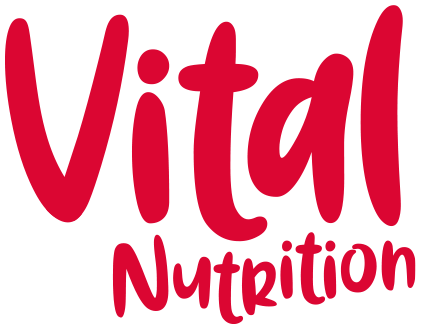Making sense of labels
Take a look in your trolley the next time you are doing a supermarket shop and you are likely to find a whole lot of health claims on your food packaging. From low calorie to gut health, protein boosted to no added sugar. Even with the very best intentions, making sense of food labels can be confusing.
The first thing to grab our attention is the front of the pack. Maybe you are loyal to a particular brand that you consider good quality, good value for money or a trusted brand. Then there are the health claims.
Most of us are doing our best to eat well, cook our family nourishing meals and make sure we get some healthy food onto our plate, at least some of the time. These health claims grab our attention. Whether you are choosing healthier options because you want to lose weight, have a health condition, or just want to eat a little better, the messages emblazoned across the front of food packaging can be enticing, but sometimes these messages can be confusing.
The first thing to keep in mind is that the front of the packs are where the marketing team have been hard at work to try to get you to buy that particular product. There are lots of rules, guidelines, laws and legislation around food labelling, so none of these messages are lying to you, but they may not be showing you the whole picture.
You will find high protein, low fat, reduced sugar, no added sugar, enriched with vitamins and plenty more messages, all vying for your attention.
Without getting you even more confused, here is a breakdown to help you make sense of it all.
· Sugar content can be described as reduced sugar, less sugar, low sugar and no added sugar. Although they all sounds as if they are sending the same message the only one that is low sugar is the one that says ‘low sugar’. This means that this food must contain 5 g or less of sugar per 100g. The other claims can still contain a lot more than this. Reduced sugar compares this product to a similar one and no added sugar can still have a hefty amount of sugar coming from added dried fruit or other natural sugars.
· High protein means the food in question must have at least 20% of its calories from protein, but this doesn’t mean that it won't have a whole host of additives, food chemicals and other ingredients that realistically make this food an ultraprocessed food. Read the ingredients label and check that you recognise all the ingredients as something you might find in your own kitchen to be sure you are eating a whole and unprocessed food.
· Low fat foods are still trending, although much of the food noise has moved us over to high protein choices these days. Low fat means that the food contains 3g or less of fat per 100g, but remember that this looks at total fat – the good and the bad – the essential, saturated, trans and polyunsaturated. If the higher fat food you are looking at is high fat because it is packed with nuts and seeds, is made using olive oil, or contains oily fish, this is likely to be better for your health than a low fat food that is processed.
· Gluten free doesn’t mean that food is any healthier than a similar food containing gluten from wheat, rye, barley or oats. Some people must follow a gluten free diet – for example, people with coeliac disease or with a gluten sensitivity, but for many of us it is not a better option.
· Traffic lights on the front of the pack can be a useful guide, but remember that this refers to a portion size – which may be what the food produced thinks you are eating, not what you actually consume. Take cereal for example – the recommended intake is usually around 45g, or 3 tablespoons.
Don’t get your pants in a twist trying to decipher labels. Keep it simple. Read the ingredients list and make sure you can make sense of it.
Keep an eye on the sugar content and aim for as low as you can go.
Pick up a couple of different packs of a similar produce – for example, two different breakfast cereals and compare the nutritional value. Take home the one with less sugar and more fibre.

